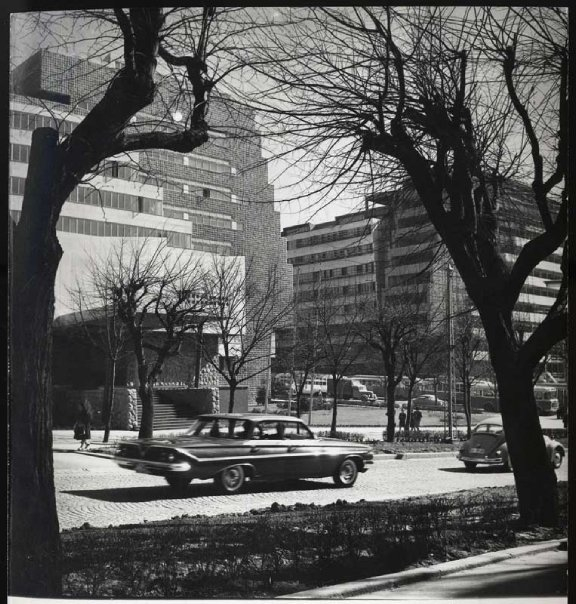Architecture in the Titoist Manner
National, Socialist and Modern 1948ŌĆō1980

Nikola Dobrovic, 1954-1963
An astonishing manifestation of European modernism is the architecture associated with TitoŌĆÖs name prevailing especially in Serbia, the former member state of Yugoslavia accepting the ideology of communism to the full. The official art of Yugoslavia in the latter half of the 20th century amalgamated the neutrality of late modernism reaching beyond politics with an ideology of strong power which was accompanied by the evolution of yugoslavism and titoism. Architecture did not exist for itself anymore, but came to be the materialization of the ŌĆ×progressive-spiritedŌĆØ pro-west policy of the state. TitoŌĆÖs break with Stalin (1948) brought about a culture policy acting against socialist realism by borrowing elements of contemporary western culture rediscovering pre-war modernism in a unique way with a developing use of materials and variable architectural language. The adjective ŌĆ×modernŌĆØ only partly fits the so-called ŌĆÖsoc-modernŌĆÖ. The evolution of TitoŌĆÖs personality cult mediates the model of Stalin even if Yugoslavian art had not been infected so much by the rabble-rousing of socialist realism than the culture of the Soviet Union or other party states evolving after 1945. The Palace of the Federation today referred to as the Serbian Palace (Palata Srbije, New-Belgrade, 1947ŌĆō59) is a spectacular and paradoxical example of the year 1947 which brought about inspirational architectural tasks not lacking the motif of challenge on the one hand, and on the other hand of the variable necessity-concept of socialist-realism making the architectsŌĆÖ creativity and independent thinking impossible.
├ēva Lovra

Ulrich, Potocnjak, Neumann and Perak: Palace of Federation, 1947-59
